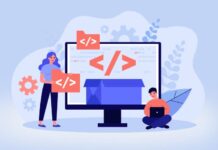Engineers are the drivers of executions. They bring changes by executing the job perfectly and efficiently. However, many a time while trying to make the execution more efficient they want to tweak and tinker with the system or the process minutely such that if it gives the desired result they will implement it on the other hand if it goes wrong, they can reverse it quickly and being an inquisitive engineer tweaking and tinkering is an inherent quality.
For achieving that feat an engineer needs to generate the pulse of the system or the process at many steps of the cycle but most of the engineers are neither instrument engineer nor very much aware of the modern electronics as a result of which they cannot test their hypothesis and gets frustrated easily and inwardly.
But had he knew about hardware computing by the Arduino microprocessor way, he could have created his own pulse generation system without any body’s help.
Well, the word ‘Microprocessor’ is enough to drive off 100 miles a mechanical or a Civil engineer. But believe me in this article what I’m going to tell you is all about Physical computing & Microprocessors but stripping everything and leaving only its hands and feet and the brain which are ready to work for you when you are not there or sleeping!
Now come about the Interaction design which is the creation of meaningful experiences between humans and objects. It’s a good way to explore the creation of beautiful and may be even controversial experiences between us and technology. Interactive design encourages design through an iterative process based on prototypes of ever-increasing fidelity. This also entails the beautiful world of Physical computing. It involves the design of interactive objects that can communicate with humans using sensors and actuators controlled by a behaviour implemented as software running inside a small ‘computer-on-a-single-chip’ called Microcontroller.
In the past, using electronics meant having to deal with electronic engineers all the time, and building circuits one at a time; these issues kept creative people from playing around with the medium directly. Most of the tools were meant for experts and required extensive knowledge. However, physical computing with Arduino means nothing less than doing artistry with electronics. With Arduino, an engineer or an artist can get to know the basics of electronics and sensors very quickly and can start building prototypes with very little efforts and then imagination starts playing around and one can get himself immersed in the world of creation of physical computing so easily.
Classic engineering relies on a strict process for getting from A to B; The Arduino way delights in the possibility of getting lost on the way and finding the much better C instead.
This is the tweaking or the tinkering process that we the engineers are so fond of – playing with the medium in an open-ended way and finding the unexpected.
Lets consider the following few cases one by one.
Case: 1
Imagine, you are installing a pump which will run according to the level of the reservoir or the flow channel. The pump works flawlessly. For running and stopping of the sophisticated pump round the clock an operator is installed. One day the operator did not turn up and there was nobody to stop the pump when there was no level and you lost the pump. Frustrated you want a level controller to take care of the operation. The instrument guy says it’s all wire & pulley type level controller which cannot be placed on that high stream flow. You ask for a contactless level controller. Nobody is there to help you out.
Case: 2
You want to view, measure & log the pump body temperature at several places of this ash slurry pump because it’s the pump which you cannot afford to lose due to spare problem. The instrument guy says that they have only bearing temperature monitor, no other kind of monitor is available and not to talk of selective temperature logging. You feel frustrated.
Case:3
You have installed an UPS system using 12 volt batteries of two different companies. However, rating and volts are all same but you have a hunch that in the 10 year life span of the battery one particular type will fail before the other. Your purchase department did not listen to your warning while placing the order. You want to monitor all these 60 batteries individually (during charging and discharging) while they are all in service. On the minute indication of one type of batteries delivering small currents during discharging and taking large current while charging, you want to record.
Not too long ago, working on hardware meant building from scratch, using hundreds of discrete components with strange names like resistor, capacitor, transistor, ICs and so on. Every circuit was wired to do only one specific application and making changes required you to cut wires & solder connections and redo it again.
All Arduino boards are available on kitsNspares.com.
This article was first published in electronicsforu.com.












































































